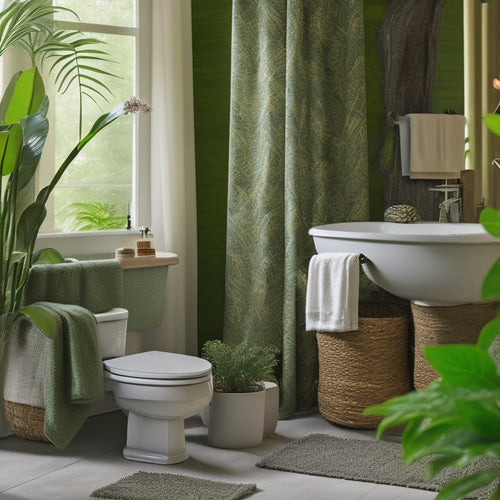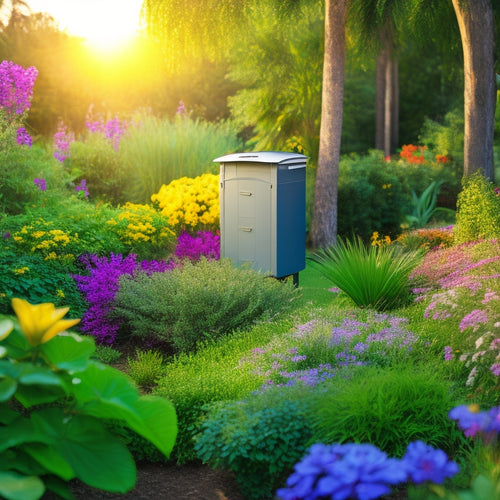
Power Up Safely: Ultimate Transfer Switch Guide
Share
You're taking an important step in safeguarding your home by considering a transfer switch, a critical component that guarantees seamless power change from your utility grid to a generator during outages. A transfer switch connects your generator to your home's electrical system, allowing for a safe and efficient power switch. Proper installation is key, so remember to turn off the main power supply, ground the generator, and prioritize circuits. Regular maintenance and inspection are also essential. Now that you're on the path to power up safely, you'll want to explore the specifics of choosing the right switch for your needs.
Key Takeaways
• Ensure safe transfer switch installation by turning off the main power supply and properly grounding the generator.
• Choose a transfer switch compatible with your generator's power output and home's power needs during an outage.
• Prioritize safety by hiring a licensed electrician to follow local codes and assess risks during installation.
• Regularly inspect and maintain the transfer switch to ensure effective functionality and prevent hazards.
• Consider automatic or manual operation based on your needs and budget, and evaluate power requirements and generator capabilities.
Transfer Switch Essentials
When it comes to ensuring smooth power shift during outages, a transfer switch for generators plays an important role, serving as a key component that connects your generator to your home's electrical system.
It's important to understand that a transfer switch isn't just a necessity, but a requirement for seamless power changeover.
As you prepare to install your transfer switch, keep in mind some critical installation tips, such as ensuring the switch is installed near the electric panel and prioritizing circuits for blackout operation.
Don't forget to create a maintenance checklist to ensure your transfer switch continues to function effectively.
Safe Installation and Operation
You must prioritize safety during the installation and operation of your transfer switch to avoid electrical shock, fire hazards, and other risks associated with improper setup.
To guarantee a safe and smooth experience, follow these essential guidelines:
-
Turn off the main power supply before starting the installation process to prevent electrical shock.
-
Ground the generator properly to avoid electrical shock and fire hazards.
-
Regularly inspect and maintain your transfer switch to prevent malfunctions and ensure peak performance.
- Keep the switch and generator area clean and dry to prevent electrical hazards and ensure secure operation.
Top Transfer Switch Options
With numerous transfer switch options available, selecting the right one for your generator and specific power needs can be a challenging task, but understanding the features, capacity, and compatibility of top models can simplify the process.
You'll find top transfer switch brands like Reliance Controls, Generac, and Kohler, each offering unique features and capacities. Look for switches with automatic or manual operation, depending on your needs. Consider the switch's amperage rating, voltage capacity, and compatibility with your generator's power output.
Installation tips include ensuring the switch is installed near the main electrical panel and prioritizing circuits for blackout operation.
Choosing the Right Switch
To guarantee a smooth power switch during outages, it's crucial to carefully evaluate your specific power needs and generator capabilities before selecting a transfer switch that can efficiently handle the load. You want a switch that's compatible with your generator and meets your power requirements.
When choosing the right switch, consider the following key factors:
-
Switch compatibility: Confirm the transfer switch is compatible with your generator's power output and type (gas, solar, or hybrid).
-
Power requirements: Calculate your home's power needs during an outage, considering essential appliances and lighting.
-
Transfer switch type: Choose between manual and automatic transfer switches, depending on your needs and budget.
- Certifications and warranties: Seek switches with relevant certifications (UL, ETL, or cETL) and extensive warranties for peace of mind.
Safety First Considerations
When selecting a transfer switch, it's equally important to prioritize safety considerations to avoid electrical hazards and guarantee a safe installation process. As you prepare for emergency preparedness, remember that a transfer switch is only as safe as its installation.
Take installation precautions seriously to prevent electrical shocks, fires, or even fatalities. Make sure you hire a licensed electrician who follows local building codes and regulations. They'll assess your home's electrical system, identifying potential risks and taking necessary measures to mitigate them.
Frequently Asked Questions
Can I Install a Transfer Switch on an Existing Electrical Panel?
You can install a transfer switch on an existing electrical panel, but be prepared for a potential Panel Upgrade and navigate Wiring Challenges, ensuring a safe and compliant setup that meets local electrical codes.
How Often Should I Test My Transfer Switch for Proper Functionality?
'Savoring seamless power changes, you should schedule regular maintenance, performing seasonal checks every 3-6 months to confirm your transfer switch functions flawlessly, preventing unexpected outages and guaranteeing your generator's reliable performance.'
Are Transfer Switches Compatible With All Types of Generators?
You'll find that transfer switches are compatible with most generator options, but it's important to take into account load prioritization and make sure the switch can handle your generator's power output, voltage, and frequency requirements.
Can I Use a Transfer Switch With a Portable Generator?
You can safely use a transfer switch with a portable generator, ensuring Generator Safety, by installing it outdoors, away from windows and doors, and following the manufacturer's instructions for Outdoor Installation.
Will a Transfer Switch Work With My Home's Existing Electrical System?
You'll need to verify that your transfer switch is compatible with your home's electrical system, taking into account electrical capacity and system compatibility, to safely integrate with your existing wiring and avoid potential electrical hazards.
Related Posts
-

Sustainable Scrubbing: Top Bathroom Solutions for Earth-Conscious Homes
You're taking an important step towards creating a more sustainable home by switching to eco-friendly bathroom cleani...
-

Why EVs Inspire Earth-Conscious Home Design Choices
As you shift to an electric vehicle, you're not just switching to a greener ride, you're igniting a broader commitmen...
-

Why Choose Solar Composting Toilets for Your Home?
By choosing a solar composting toilet for your home, you'll greatly reduce your environmental impact, slashing your w...


